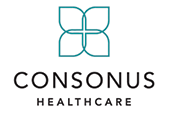Is your kitchen a safe place to work? Sharp blades, high shelves, open flames, hot liquids, tight spaces, and quick movements can be injuries waiting to happen. There are ways to make a kitchen full of these potential hazards safer.
Tips to help ensure a safe working space in your workplace kitchen
- Require proper attire. Clothes and shoes should fit well and cover as mush skin as possible. Closed toed shoes with non-slip soles are a must have.
- Train your employees to communicate when they are coming and going to avoid collisions and communicate any concerns to supervisors promptly.
- Provide non-slip mats. Give employees safer footing for wet and greasy floors in hard working areas. Check them regularly for wear and tear so they don’t become a tripping hazard.
- Provide adequate ventilation. A kitchen can quickly become hot or smokey.
- Clean up spills and broken glass promptly. Use highly visible warning signs in wet areas. Clean up broken glass or dishes with a broom and dustpan, never by hand.
- Prevent lacerations and burns. Keep knives sharp. Provide cut resistant gloves and non-slip cutting boards. Train employees in safe cutting techniques. Provide good oven mitts and potholders.
- Avoid electrical hazards. Check electrical cords regularly for signs of wear or damage. Replace any damaged cords promptly, do not use the appliance until cords are replaced. Keep cords away form liquid and out of the way of tripping hazards.
- Hold regular fire drills. The kitchen is the most common site for fires. Ensure that your employees know what to do in the event of a fire.
- Keep walkways and high traffic areas free of clutter.
- Maintaining a safe, well-kept kitchen can avoid injuries and keep everyone healthy!
Questions regarding LeadingAge Washington’s Group Retro program, contact:
- Scott DeHem, Vice President of Claims, Comprehensive Risk Management/Risk Finance, scott@riskfinance.net
- Pat Sylvia, LeadingAge WA Staff, PSylvia@LeadingAgeWA.org




